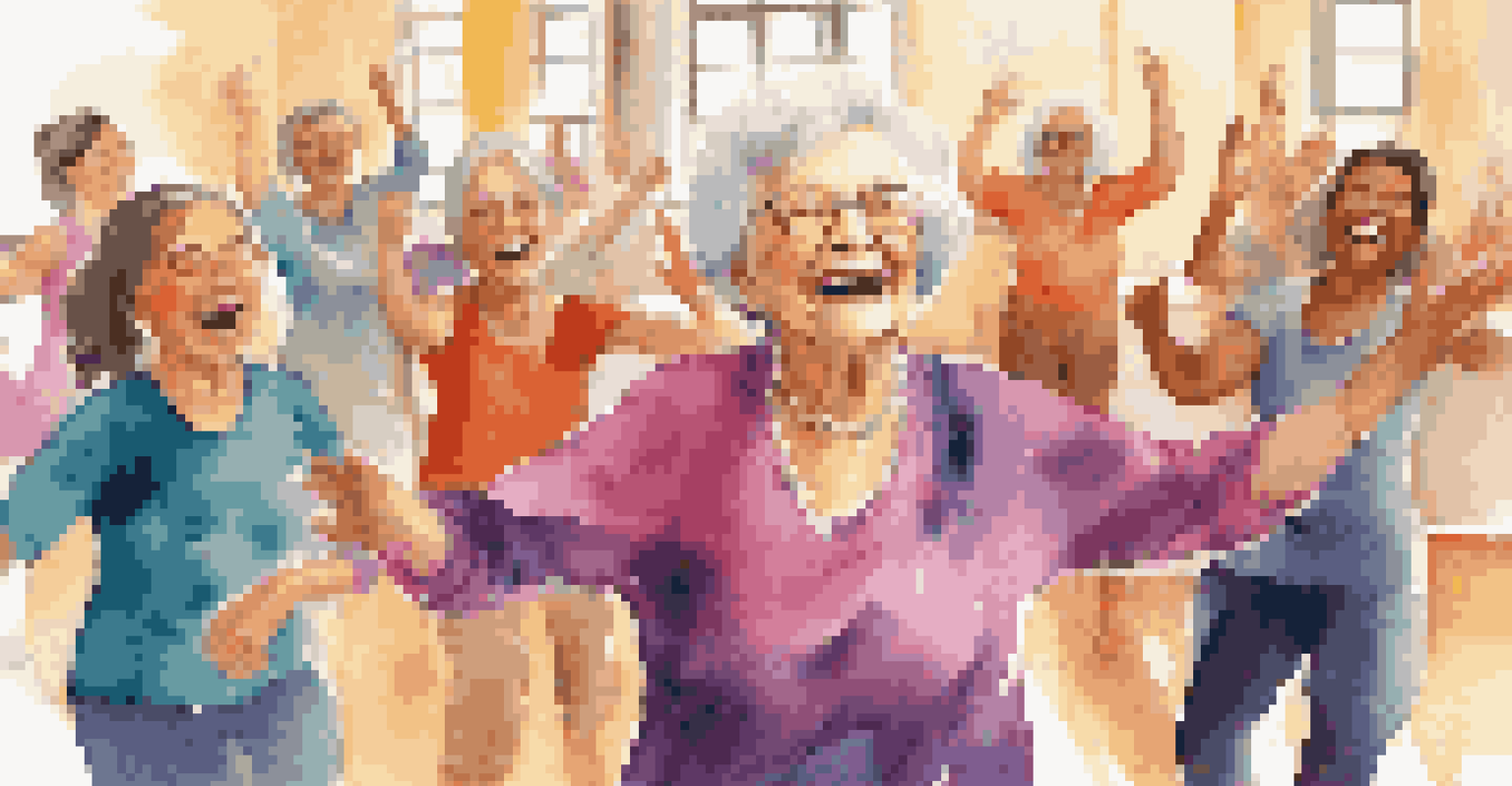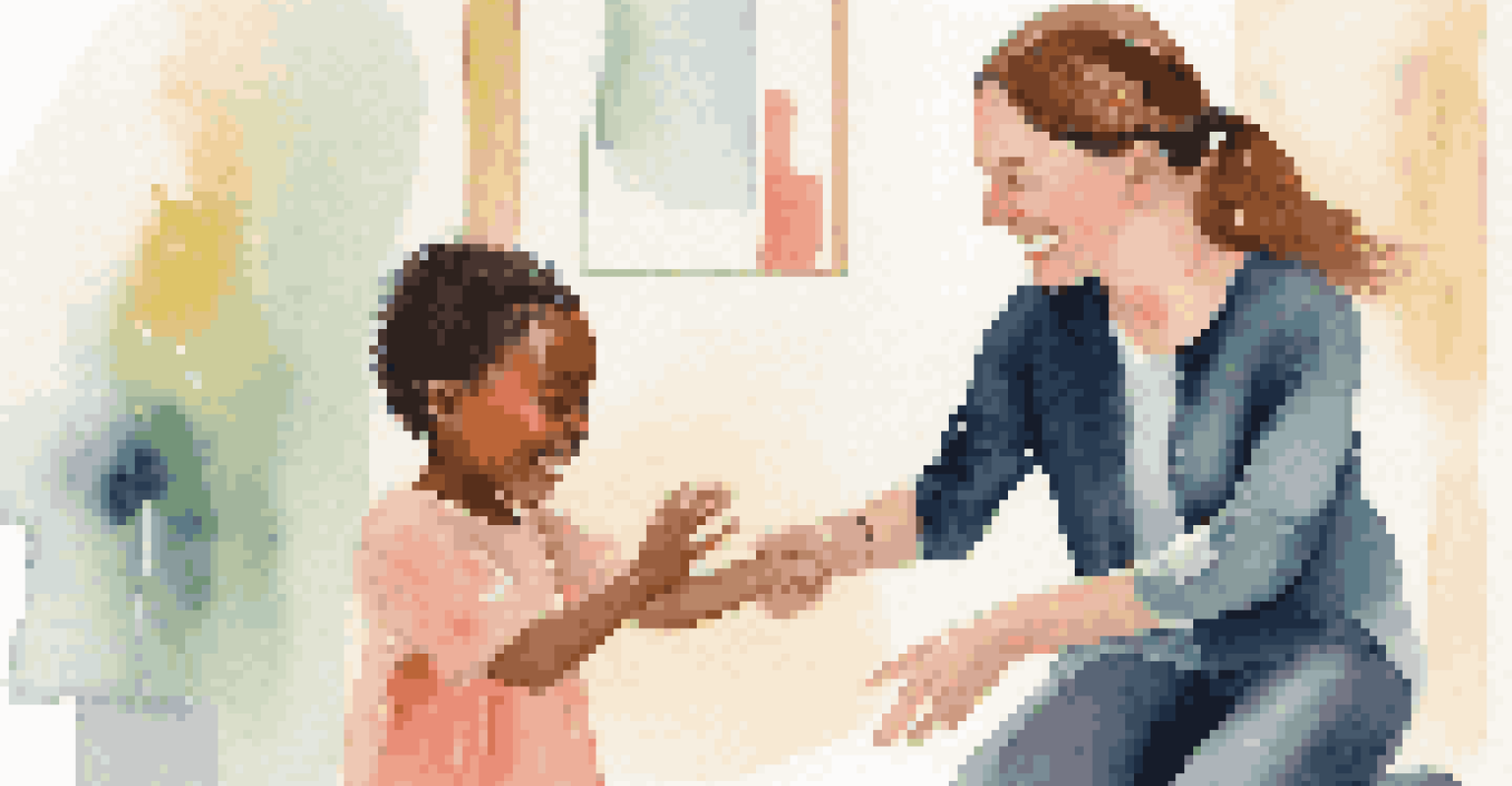Dance Movement Therapy: Bridging Art and Neuroscience

What is Dance Movement Therapy and Its Purpose?
Dance Movement Therapy (DMT) is a therapeutic approach that uses movement to support emotional, cognitive, and physical integration. It taps into the expressive potential of dance, allowing individuals to communicate feelings and experiences without words. This form of therapy can be especially beneficial for those who find it hard to express themselves verbally.
Dance is the hidden language of the soul.
The primary purpose of DMT is to enhance well-being through creative expression. It helps people process emotions, reduce stress, and improve self-awareness. By engaging in movement, clients can explore their inner selves and develop a deeper connection with their bodies and minds.
DMT is applied in various settings, including hospitals, schools, and community centers. It's particularly effective for individuals dealing with trauma, anxiety, or depression. The therapeutic process not only nurtures emotional healing but also promotes physical health and resilience.
The Science Behind Dance Movement Therapy
At the heart of DMT lies a fascinating intersection of art and neuroscience. Research shows that movement can significantly impact the brain, influencing mood and cognitive function. When we dance, our brains release neurotransmitters like dopamine and endorphins, which promote feelings of happiness and well-being.

Neuroscience has revealed that engaging in physical activities, including dance, can enhance neuroplasticity. This means that movement can help reshape the brain, allowing it to adapt and heal. Clients often experience improved emotional regulation and cognitive flexibility through consistent engagement in DMT.
DMT Enhances Emotional Well-Being
Dance Movement Therapy supports emotional healing and self-expression through creative movement.
Studies have also demonstrated that DMT can reduce symptoms of anxiety and depression. By integrating movement with therapeutic principles, practitioners can help clients access and process emotions that might be difficult to articulate, thereby fostering healing and growth.
How DMT Facilitates Emotional Expression
One of the unique aspects of DMT is its ability to facilitate emotional expression through non-verbal means. Many individuals struggle to articulate their feelings, but movement can serve as a powerful language. Through dance, clients can express emotions that may be stuck or difficult to express verbally.
Movement is a medicine for creating change in a person's physical, emotional, and mental states.
For example, a person dealing with grief may find it challenging to talk about their loss. However, through movement, they might embody their feelings of sorrow and eventually find a way to release that energy. This process can lead to profound personal insights and a path toward healing.
Moreover, the therapeutic environment encourages a sense of safety and trust, allowing individuals to explore their emotions freely. As clients engage in movement, they often discover new facets of themselves, fostering resilience and self-acceptance.
The Role of the Therapist in DMT
In Dance Movement Therapy, the therapist plays a crucial role in guiding and supporting clients throughout their journey. A trained DMT practitioner understands the nuances of movement and how it relates to emotional expression. They create a safe, non-judgmental space where clients feel comfortable exploring their feelings.
The therapist observes and interprets clients' movements, providing feedback that can facilitate deeper understanding. They may encourage specific movements or improvisational techniques to help clients connect with their emotions. This dynamic relationship between client and therapist is essential for effective healing.
Therapists Guide the Healing Process
Trained DMT practitioners create a safe space, blending movement with verbal dialogue to facilitate emotional insights.
Additionally, therapists often integrate verbal dialogue with movement. This holistic approach allows clients to articulate their experiences while also engaging their bodies, reinforcing the mind-body connection. This dual focus enhances the therapeutic process and deepens emotional insight.
Benefits of Dance Movement Therapy
Dance Movement Therapy offers numerous benefits that extend beyond emotional healing. Physically, it promotes body awareness, flexibility, and strength. Participants often report feeling more connected to their bodies, which can lead to improved overall health and wellness.
Emotionally, DMT helps individuals navigate complex feelings, fostering resilience and coping skills. Clients often leave sessions feeling lighter and more empowered, having processed emotions in a safe and creative way. This newfound emotional awareness can positively affect relationships and daily life.
Furthermore, DMT encourages social interaction and community building. Group sessions can enhance feelings of belonging and support among participants. This social aspect can be incredibly valuable, as it helps individuals realize they are not alone in their struggles.
DMT Across Different Populations
Dance Movement Therapy is versatile and can be adapted to various populations, including children, the elderly, and individuals with disabilities. For children, DMT can be an engaging way to support emotional development and social skills. It allows them to express feelings and navigate challenges through playful movement.
For the elderly, DMT can improve cognitive function and physical health while fostering social connections. It offers a creative outlet that can enhance mood and reduce feelings of isolation. Many elderly clients find joy and vitality through movement, which can significantly improve their quality of life.
DMT Benefits Diverse Populations
Dance Movement Therapy is adaptable for various groups, including children, the elderly, and individuals with disabilities, promoting connection and self-confidence.
Individuals with disabilities also benefit from DMT, as it provides a means of self-expression and communication. Tailored sessions can help clients explore their capabilities, leading to increased confidence and self-esteem. This inclusivity underscores the adaptability and power of dance as a therapeutic tool.
Getting Started with Dance Movement Therapy
If you're interested in exploring Dance Movement Therapy, the first step is to find a qualified practitioner. Many therapists offer introductory sessions where you can learn more about the process and what to expect. It's essential to choose someone with experience and training in DMT to ensure a safe and effective experience.
Before your first session, it can be helpful to reflect on your goals for therapy. Are you seeking emotional healing, stress relief, or greater body awareness? Having a clear intention can enhance your experience and help the therapist tailor the sessions to your needs.

Remember, DMT is about personal exploration and self-expression, so approach it with an open mind. You don't need to be a dancer or have any prior experience; the focus is on movement that feels right for you. As you embark on this journey, be ready to embrace the transformative power of movement.